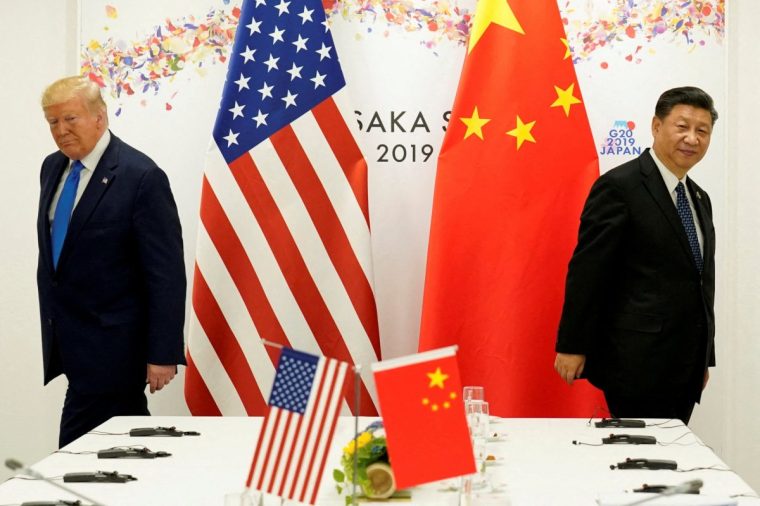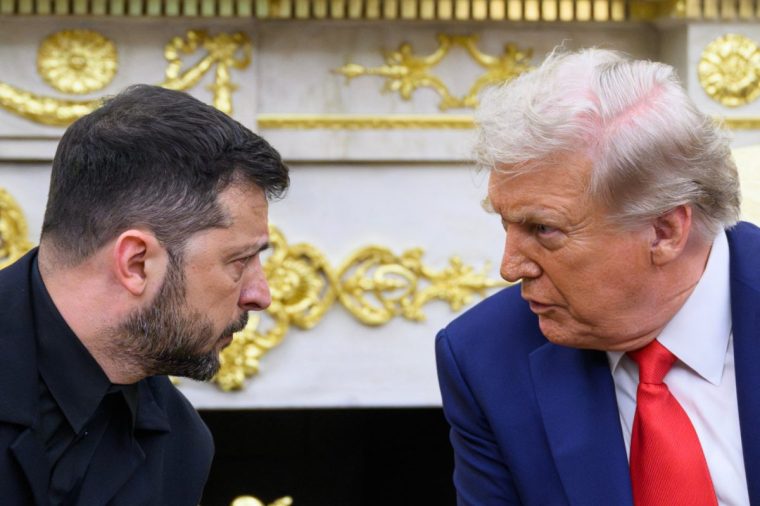The US President has floated a victory fund for Ukraine to buy weapons with the proceeds from tariffs levied against Beijing for its purchases of Russian oil
Donald Trump is poised to launch a new plan to excuse himself from directly confronting Russian President Vladimir Putin over his ongoing war against Ukraine. Months after he started threatening “very serious consequences” for Moscow over Putin’s inaction resolving the conflict, the US President now plans to go after…China.
Treasury Secretary Scott Bessent revealed this week that the President intends to create a “victory fund” for Ukrainian weapons purchases, by fuelling it with tariffs levied against Beijing for China’s ongoing purchases of Russian oil. Calling China “an unreliable partner for the world”, Bessent thundered on Wednesday “it is the purchase of Russian oil by China that fuels the Russian war machines…Make no mistake, this is China vs The World”.

Bessent urged European governments to back the White House proposals by pledging to impose tariffs of their own on China over its reliance on Russian oil. “We will respond…if our European partners will join us”, he said. “Whether you want to call it a ‘Russian oil tariff on China’ or a ‘Ukrainian victory tariff on China’…our European allies have to be willing to follow”. He claimed, without providing any proof, that the President can count on the support of 85 US senators – a massive majority – to back the introduction of “500 per cent tariffs on China for the purchase of Russian oil”, but protested that European lawmakers have no similar plans to follow suit.
If enforced, these would be the second set of “secondary sanctions” imposed by the White House relating to Russian oil shipments. India is currently facing 50 per cent tariffs on exports to the United States, a number that includes a 25 per cent penalty for Prime Minister Narendra Modi’s continued support of Putin’s economy by purchasing Moscow’s oil.
But on Wednesday, Trump unexpectedly claimed that Modi had agreed to abandon further purchases from Putin. “He assured me today that they will not be buying oil from Russia,” Trump told reporters at the White House. In Delhi, the Indian government offered no confirmation of that claim. In a statement, it noted that “India is a significant importer of oil and gas. It has been our consistent policy to safeguard the interests of the Indian consumer in a volatile energy scenario”, and said discussions with the White House were merely “ongoing”.

The notion that Trump might be interested in creating a “victory fund” for Ukraine to spend on munitions will certainly attract the attention of President Volodymyr Zelensky. In February, Trump angrily accused the Ukrainian leader of lacking the capacity to beat the Russians. “You’re not in a good position. You don’t have the cards”, he shouted at Zelensky during their contentious, made-for-TV Oval Office meeting.
Putin’s refusal to accept terms either for a short-term truce, or for face-to-face negotiations with Zelensky, has brought Trump’s diplomatic efforts to broker the conflict’s end to a standstill. But on Monday in Jerusalem, he publicly instructed Special Envoy Steve Witkoff to prioritise action on the war against Ukraine, now that all the living Israeli hostages have been returned from Gaza.
In Washington, top Trump officials have been meeting this week with a Ukrainian delegation led by Prime Minister Yulia Svyrydenko and Zelensky’s Chief of Staff, Andriy Yermak. Zelensky himself will meet Trump at the White House on Friday, amid talk of an intensified campaign of economic and military pressure on Putin to sue for peace. The White House will hope that simply the whisper of an American “victory fund” for Kyiv will help concentrate Putin’s mind.
But the Russian leader may, once again, choose to call Trump’s bluff. He will note that the proposed US tariffs on Chinese oil require European backing before the White House will agree to impose them. He will know that President Xi Jinping is expecting to meet Trump face to face at the upcoming APEC summit in South Korea, and that the threat of tariffs on oil purchases could be negotiated away at that session. He may recall last month’s meeting of the Shanghai Co-Operation Organisation in the Chinese city of Tianjin, where Xi, Putin and Modi pledged to establish a new alliance with one another to stand up to Washington’s hegemony.
Most importantly of all, he will remind himself that over the past nine months, Trump has engaged in numerous threats to force the Kremlin’s hand, none of which has ever materialised. Putin may believe that once again, Trump’s bark will prove much worse than his bite.
